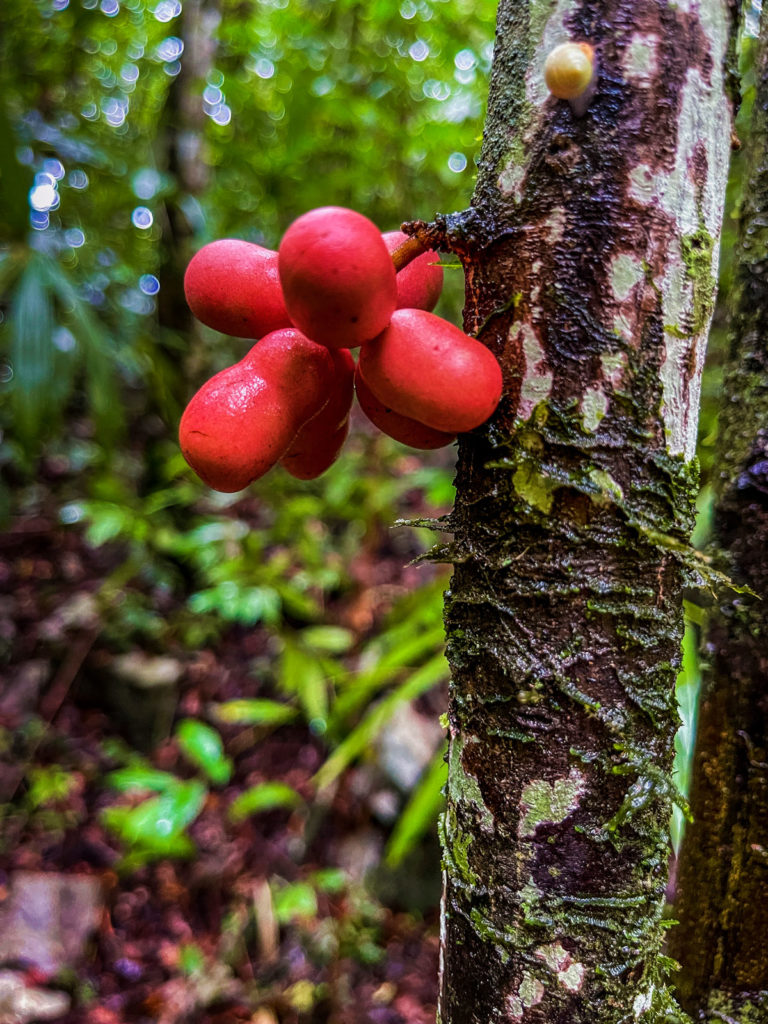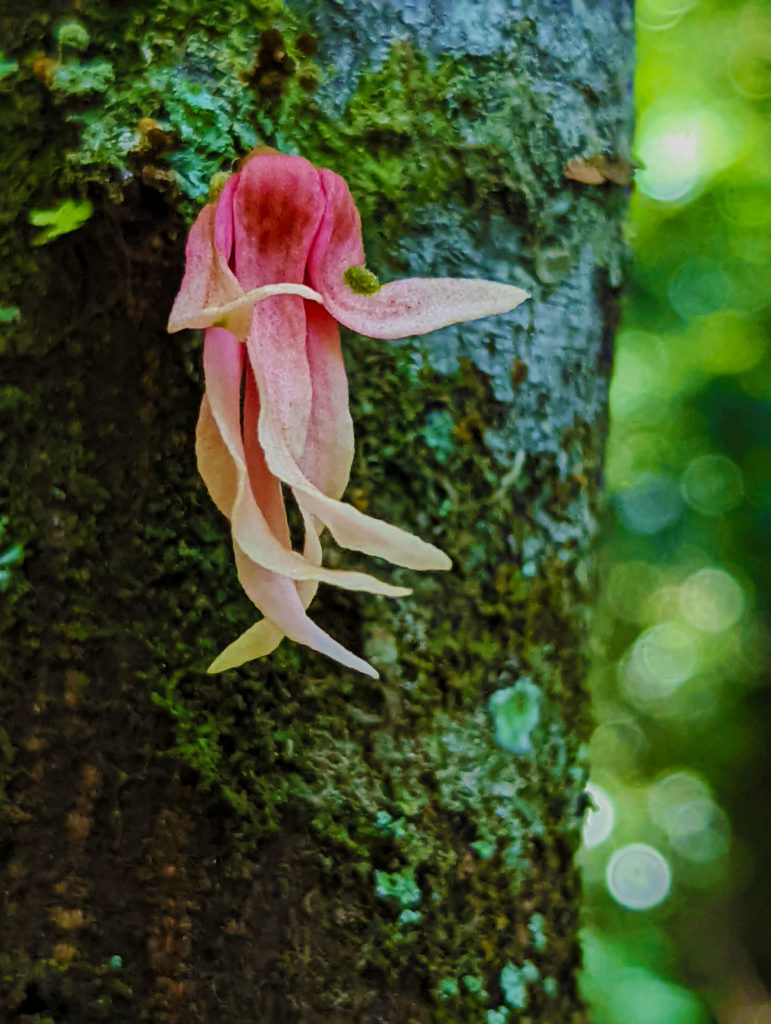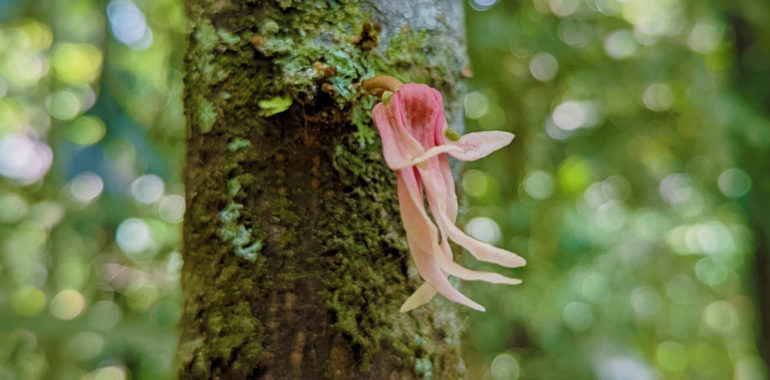In one of our expeditions of the: “Proyecto de Documentación de Biodiversidad de Livingston” the path of Lagunita Creek (Río Sarstún) was visited. In it, we could see a cauliflorous tree that had red fruits growing from its trunk. The tree had already flowered that year, so they wanted to investigate with our plant scouts which other areas we could observe it. Lucas Cuz, one of our local plant scouts in the area, told us that in his village “Aldea El Rosario” there was a tree of the same species, so we asked him to monitor it and send us photographs when it was absent.
At the beginning of the photography month of April 2022, the tree began to flower, so he had to travel to Livingston quickly to take this majestic califlorous tree.
In the morning we visit the “Aldea El Rosario”, we cross the path of the village and we arrive at the tree surely called Cacao kuk, which became means Squirrel Cacao or also known as Mountain Cocoa. The flower had fallen! There will only be one left, so we took the opportunity to carefully take pictures of it. This flower was at the top of the tree, but thanks to the ladder and our photographic team it was possible to document it. Its flower is incredible since it is shaped like a pink ballerina.

Photo by Nicholas Helmuth. iPhone 13 Pro Max. October 2021, Cerro Sarstún. Stenanona stenopetala fruits.
Stenanona stenopetala Schatz & Maas. (Ortiz, 2020). is a species of plant that belongs to the ANNONACEAE family. It is distributed in: Belize, Toledo; Guatemala in Petén, Alta Verapaz, Izabal and Huehuetenango; and Mexico in Chiapas and Tabasco. Its Habitat and ecology: in humid tropical forests, often on limestone. At elevations from 200 to 800 m (Schatz & Maas. 2010).
The common names it receives in the different areas of its distribution are: Belize: Cacao, Mountain Cacao. Guatemala: Cacao Ute, Cacao Te (Schatz & Maas. 2010) and Cacao Kuk.
In 1930 Ni Fries stated that the petals lack a prominent vein and do not exhibit a characteristic thickness like Desmopsis spp. The longitudinal rib is clearly evident in the rehydrated petals, and the degree of fleshiness, thickness, and stiffness. These characteristics are far below those of the Desmopsis species, but it does agree with these characteristics or similarities with other species of the same genus Stenanona. The pollen shows no evidence of opening formation, unlike all Desmopsis spp. examined so far (Schatz & Maas. 2010).

Photo by Roxana Leal. Google Pixel 6. April 8th 2022. Aldea El Rosario. Stenanona stenopetala flower.
Among its botanical characteristics, the leaves are dark green and shiny, when dry they are dull gray green, as well as the dense golden brown indument of the ribs and the primary vein d, the margin of the ciliated leaf, being very similar to S. carrillensis and S. hondurensis. Among the Stenanona species with free petals, S. stenopetala is distinguished by its mostly pink and relatively short pedicel. These are usually produced from the main trunk (Schatz & Maas. 2010).
BIBLIOGRAPHY
- 2014
- A NEW SPECIES OF STENANONA (ANNONACEAE) ENDEMIC TO CHIAPAS, MEXICO
Available online:
www.botanicalsciences.com.mx/index.php/botanicalSciences/article
/view/132/pdf_26
- 2020
- Cuentos de la selva: relaciones filogenéticas e historia biogeográfica de los géneros Stenanoa
Available online:
www.youtube.com/watch?v=AzfFiGk8NOU&ab_channel=SeminariosIB
- 2010
- Synoptic revision of Stenanona (Annonaceae)
www.ingentaconnect.com/content/nhn/blumea
/2010/00000055/00000003/art00001#

